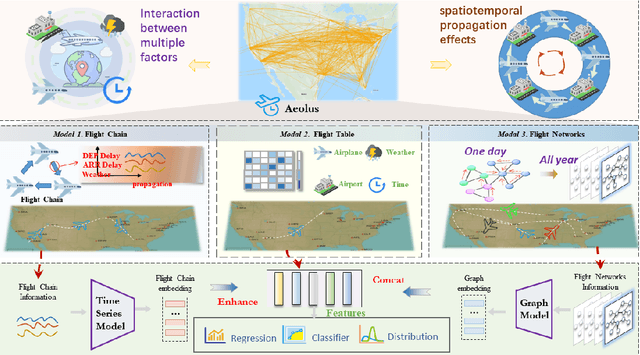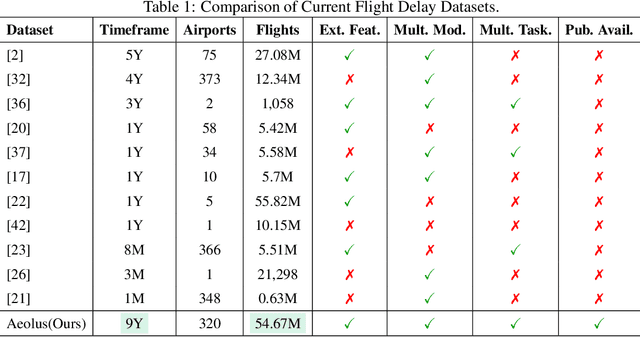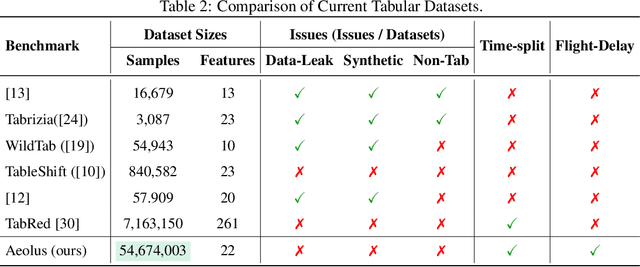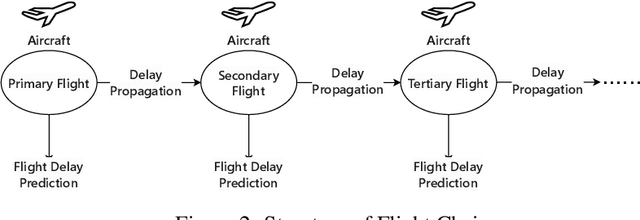Yuxuan Liang
Cross-Language Bias Examination in Large Language Models
Dec 17, 2025Abstract:This study introduces an innovative multilingual bias evaluation framework for assessing bias in Large Language Models, combining explicit bias assessment through the BBQ benchmark with implicit bias measurement using a prompt-based Implicit Association Test. By translating the prompts and word list into five target languages, English, Chinese, Arabic, French, and Spanish, we directly compare different types of bias across languages. The results reveal substantial gaps in bias across languages used in LLMs. For example, Arabic and Spanish consistently show higher levels of stereotype bias, while Chinese and English exhibit lower levels of bias. We also identify contrasting patterns across bias types. Age shows the lowest explicit bias but the highest implicit bias, emphasizing the importance of detecting implicit biases that are undetectable with standard benchmarks. These findings indicate that LLMs vary significantly across languages and bias dimensions. This study fills a key research gap by providing a comprehensive methodology for cross-lingual bias analysis. Ultimately, our work establishes a foundation for the development of equitable multilingual LLMs, ensuring fairness and effectiveness across diverse languages and cultures.
NeuralOGCM: Differentiable Ocean Modeling with Learnable Physics
Dec 12, 2025Abstract:High-precision scientific simulation faces a long-standing trade-off between computational efficiency and physical fidelity. To address this challenge, we propose NeuralOGCM, an ocean modeling framework that fuses differentiable programming with deep learning. At the core of NeuralOGCM is a fully differentiable dynamical solver, which leverages physics knowledge as its core inductive bias. The learnable physics integration captures large-scale, deterministic physical evolution, and transforms key physical parameters (e.g., diffusion coefficients) into learnable parameters, enabling the model to autonomously optimize its physical core via end-to-end training. Concurrently, a deep neural network learns to correct for subgrid-scale processes and discretization errors not captured by the physics model. Both components work in synergy, with their outputs integrated by a unified ODE solver. Experiments demonstrate that NeuralOGCM maintains long-term stability and physical consistency, significantly outperforming traditional numerical models in speed and pure AI baselines in accuracy. Our work paves a new path for building fast, stable, and physically-plausible models for scientific computing.
FlowNet: Modeling Dynamic Spatio-Temporal Systems via Flow Propagation
Nov 05, 2025Abstract:Accurately modeling complex dynamic spatio-temporal systems requires capturing flow-mediated interdependencies and context-sensitive interaction dynamics. Existing methods, predominantly graph-based or attention-driven, rely on similarity-driven connectivity assumptions, neglecting asymmetric flow exchanges that govern system evolution. We propose Spatio-Temporal Flow, a physics-inspired paradigm that explicitly models dynamic node couplings through quantifiable flow transfers governed by conservation principles. Building on this, we design FlowNet, a novel architecture leveraging flow tokens as information carriers to simulate source-to-destination transfers via Flow Allocation Modules, ensuring state redistribution aligns with conservation laws. FlowNet dynamically adjusts the interaction radius through an Adaptive Spatial Masking module, suppressing irrelevant noise while enabling context-aware propagation. A cascaded architecture enhances scalability and nonlinear representation capacity. Experiments demonstrate that FlowNet significantly outperforms existing state-of-the-art approaches on seven metrics in the modeling of three real-world systems, validating its efficiency and physical interpretability. We establish a principled methodology for modeling complex systems through spatio-temporal flow interactions.
Aeolus: A Multi-structural Flight Delay Dataset
Oct 30, 2025



Abstract:We introduce Aeolus, a large-scale Multi-modal Flight Delay Dataset designed to advance research on flight delay prediction and support the development of foundation models for tabular data. Existing datasets in this domain are typically limited to flat tabular structures and fail to capture the spatiotemporal dynamics inherent in delay propagation. Aeolus addresses this limitation by providing three aligned modalities: (i) a tabular dataset with rich operational, meteorological, and airportlevel features for over 50 million flights; (ii) a flight chain module that models delay propagation along sequential flight legs, capturing upstream and downstream dependencies; and (iii) a flight network graph that encodes shared aircraft, crew, and airport resource connections, enabling cross-flight relational reasoning. The dataset is carefully constructed with temporal splits, comprehensive features, and strict leakage prevention to support realistic and reproducible machine learning evaluation. Aeolus supports a broad range of tasks, including regression, classification, temporal structure modeling, and graph learning, serving as a unified benchmark across tabular, sequential, and graph modalities. We release baseline experiments and preprocessing tools to facilitate adoption. Aeolus fills a key gap for both domain-specific modeling and general-purpose structured data research.Our source code and data can be accessed at https://github.com/Flnny/Delay-data
A Game-Theoretic Spatio-Temporal Reinforcement Learning Framework for Collaborative Public Resource Allocation
Oct 30, 2025Abstract:Public resource allocation involves the efficient distribution of resources, including urban infrastructure, energy, and transportation, to effectively meet societal demands. However, existing methods focus on optimizing the movement of individual resources independently, without considering their capacity constraints. To address this limitation, we propose a novel and more practical problem: Collaborative Public Resource Allocation (CPRA), which explicitly incorporates capacity constraints and spatio-temporal dynamics in real-world scenarios. We propose a new framework called Game-Theoretic Spatio-Temporal Reinforcement Learning (GSTRL) for solving CPRA. Our contributions are twofold: 1) We formulate the CPRA problem as a potential game and demonstrate that there is no gap between the potential function and the optimal target, laying a solid theoretical foundation for approximating the Nash equilibrium of this NP-hard problem; and 2) Our designed GSTRL framework effectively captures the spatio-temporal dynamics of the overall system. We evaluate GSTRL on two real-world datasets, where experiments show its superior performance. Our source codes are available in the supplementary materials.
Augur: Modeling Covariate Causal Associations in Time Series via Large Language Models
Oct 09, 2025Abstract:Large language models (LLM) have emerged as a promising avenue for time series forecasting, offering the potential to integrate multimodal data. However, existing LLM-based approaches face notable limitations-such as marginalized role in model architectures, reliance on coarse statistical text prompts, and lack of interpretability. In this work, we introduce Augur, a fully LLM driven time series forecasting framework that exploits LLM causal reasoning to discover and use directed causal associations among covariates. Augur uses a two stage teacher student architecture where a powerful teacher LLM infers a directed causal graph from time series using heuristic search together with pairwise causality testing. A lightweight student agent then refines the graph and fine tune on high confidence causal associations that are encoded as rich textual prompts to perform forecasting. This design improves predictive accuracy while yielding transparent, traceable reasoning about variable interactions. Extensive experiments on real-world datasets with 25 baselines demonstrate that Augur achieves competitive performance and robust zero-shot generalization.
Training-Free Pyramid Token Pruning for Efficient Large Vision-Language Models via Region, Token, and Instruction-Guided Importance
Sep 19, 2025Abstract:Large Vision-Language Models (LVLMs) have significantly advanced multimodal understanding but still struggle with efficiently processing high-resolution images. Recent approaches partition high-resolution images into multiple sub-images, dramatically increasing the number of visual tokens and causing exponential computational overhead during inference. To address these limitations, we propose a training-free token pruning strategy, Pyramid Token Pruning (PTP), that integrates bottom-up visual saliency at both region and token levels with top-down instruction-guided importance. Inspired by human visual attention mechanisms, PTP selectively retains more tokens from visually salient regions and further leverages textual instructions to pinpoint tokens most relevant to specific multimodal tasks. Extensive experiments across 13 diverse benchmarks demonstrate that our method substantially reduces computational overhead and inference latency with minimal performance loss.
HERO: Rethinking Visual Token Early Dropping in High-Resolution Large Vision-Language Models
Sep 16, 2025



Abstract:By cropping high-resolution images into local tiles and encoding them independently, High-Resolution Large Vision-Language Models (HR-LVLMs) have demonstrated remarkable fine-grained visual understanding capabilities. However, this divide-and-conquer paradigm significantly increases the number of visual tokens, resulting in substantial computational and memory overhead. To better understand and address this challenge, we empirically investigate visual token utilization in HR-LVLMs and uncover three key findings: (1) the local tiles have varying importance, jointly determined by visual saliency and task relevance; (2) the CLS token in CLIP-based vision encoders exhibits a two-stage attention pattern across layers, with each stage attending to different types of visual tokens; (3) the visual tokens emphasized at different stages encode information at varying levels of granularity, playing complementary roles within LVLMs. Building on these insights, we propose HERO, a High-resolution visual token early dropping framework that integrates content-adaptive token budget allocation with function-aware token selection. By accurately estimating tile-level importance and selectively retaining visual tokens with complementary roles, HERO achieves superior efficiency-accuracy trade-offs across diverse benchmarks and model scales, all in a training-free manner. This study provides both empirical insights and practical solutions toward efficient inference in HR-LVLMs.
CaPulse: Detecting Anomalies by Tuning in to the Causal Rhythms of Time Series
Aug 06, 2025



Abstract:Time series anomaly detection has garnered considerable attention across diverse domains. While existing methods often fail to capture the underlying mechanisms behind anomaly generation in time series data. In addition, time series anomaly detection often faces several data-related inherent challenges, i.e., label scarcity, data imbalance, and complex multi-periodicity. In this paper, we leverage causal tools and introduce a new causality-based framework, CaPulse, which tunes in to the underlying causal pulse of time series data to effectively detect anomalies. Concretely, we begin by building a structural causal model to decipher the generation processes behind anomalies. To tackle the challenges posed by the data, we propose Periodical Normalizing Flows with a novel mask mechanism and carefully designed periodical learners, creating a periodicity-aware, density-based anomaly detection approach. Extensive experiments on seven real-world datasets demonstrate that CaPulse consistently outperforms existing methods, achieving AUROC improvements of 3% to 17%, with enhanced interpretability.
Recognition through Reasoning: Reinforcing Image Geo-localization with Large Vision-Language Models
Jun 17, 2025Abstract:Previous methods for image geo-localization have typically treated the task as either classification or retrieval, often relying on black-box decisions that lack interpretability. The rise of large vision-language models (LVLMs) has enabled a rethinking of geo-localization as a reasoning-driven task grounded in visual cues. However, two major challenges persist. On the data side, existing reasoning-focused datasets are primarily based on street-view imagery, offering limited scene diversity and constrained viewpoints. On the modeling side, current approaches predominantly rely on supervised fine-tuning, which yields only marginal improvements in reasoning capabilities. To address these challenges, we propose a novel pipeline that constructs a reasoning-oriented geo-localization dataset, MP16-Reason, using diverse social media images. We introduce GLOBE, Group-relative policy optimization for Locatability assessment and Optimized visual-clue reasoning, yielding Bi-objective geo-Enhancement for the VLM in recognition and reasoning. GLOBE incorporates task-specific rewards that jointly enhance locatability assessment, visual clue reasoning, and geolocation accuracy. Both qualitative and quantitative results demonstrate that GLOBE outperforms state-of-the-art open-source LVLMs on geo-localization tasks, particularly in diverse visual scenes, while also generating more insightful and interpretable reasoning trajectories.
 Add to Chrome
Add to Chrome Add to Firefox
Add to Firefox Add to Edge
Add to Edge